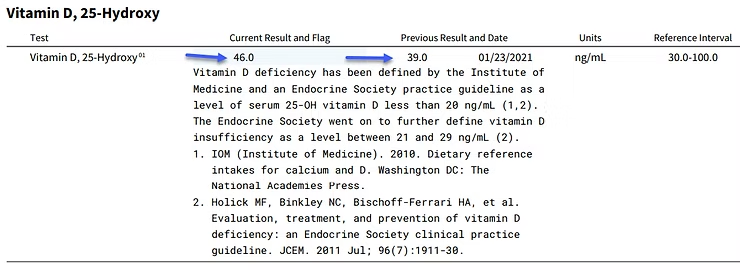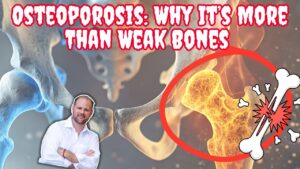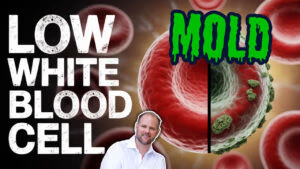Before and After: A Comprehensive Analysis of a 38-Year-Old Male's Health Transformation
Introduction
In this article, we will examine lab results from a 38-year-old male who was suffering from several conditions as a result of damage. This man came to me because he had been trying hard on his own to improve his health, but wanted a very specific plan to help him get to a better place.
For comparison, we had labs taken a few months ago and new labs taken very recently prior to publishing this article. Looking at these labs we can see some of the conditions and causes that were missed and undiscovered. These discoveries led to a complete lifestyle change, leading him on a better path to healing.
Initial Health Conditions
The first set of labs was taken in November 2021, and we are revisiting them in February of 2022. When he came to me, he was suffering from the following conditions:
– Plantar fasciitis
– Painful feet
– Neuropathy
– Widespread frailty
– Weakness in tendons
– Hypersensitivity.
Essentially, he was feeling like he was significantly older than his actual age.
Comparing Blood Sugar and Vitamin Levels
One thing you’ll notice from these labs: a lot of significant changes happened just from this patient altering his diet. However, it was not enough. This patient needed a very specific, guided plan.
Looking at the first result from the labs taken at the end of November 2022, you’ll see his A1c results. A1c is a marker for blood sugar levels. From November to his most recent labs, he was able to go from pre-diabetic (5.7) to that sweet spot around the 5.0 level.
Next, looking at his vitamin D levels, you’ll see he started out around 39 and improved up to 46. While that is an improvement, I like to see that number around 80, so there is still plenty of room to continue improving.
Now examining vitamin B12, increasing from 542 to 889. So it is very clear he is making improvements on his own, but he was still having problems. This serves as more evidence that he, like most of us, would benefit from a specific, guided plan.
Hormone Levels and Inflammation Markers
Unfortunately, his fasting insulin levels were not tested in his first round of labs, but we can still see that his insulin level is at 9. I like to see this number between 5 and 6, so this result tells us the patient has some sugar dysregulation problems. Because insulin is a hormone that can cause inflammation, if you have more than you should (more than that 5-6 range), then your body is in a chronic state of inflammation to some degree.
The next test we examined was his testosterone. We can see an almost 100% increase in his testosterone levels from 338 to 611, which is a significant change.
This is vitally important for men to understand. Men with low testosterone may experience one or more of the following symptoms:
– Low libido
– Trouble gaining full erections
– Trouble maintaining full erections
– Not having morning erections
These are luckily problems which can be fixed with simple lifestyle changes. By changing your food choices, eating right, and working to get your insulin levels down (specifically A1c level down), you can see a significant increase in these conditions.
He was able to improve his thyroid hormone levels, as well as his C-reactive protein levels. His thyroid levels increased (which is good), and his C-reactive proteins decreased, showing markedly less inflammation.
The Critical Role of Ferritin
At this point, we caught some of the most significant issues, namely ferritin. This patient had high ferritin. Nobody had checked this before we did.
Ferritin is a measurement of iron storage, and the sweet spot for levels of ferritin range from 40 to 80. This patient had ferritin levels of over 470, more than 10x what the normal, healthy functioning level should be.
Now, one thing to keep in mind with ferritin is that it can be an acute phase reactant, meaning that these numbers will go up if you are inflamed. However, all of his markers that we have checked out do not indicate huge inflammation, so we can then determine that his ferritin levels need to come down.
We have a specific protocol for bringing down ferritin levels, and it is simple to do. It just needs to be consistently checked and monitored. The reason ferritin levels are important to check is because it is an indicator of problems with your iron levels. Imagine that you have a bicycle, which you leave out in the rain. That bike is going to rust. A similar process is happening inside of your body when ferritin levels are high.
If you have high ferritin, which is almost never checked, this is an indicator of your body “rusting” from the inside out, which will naturally cause problems. I have a whole series on ferritin because it is that important, and people’s cases have gotten reversed simply by identifying this one marker and handling it.
The Critical Role of Ferritin
We also checked his homocysteine levels, which can be elevated if you have a MTHFR SNP, which you can learn more about in this post I published on my blog.
His homocysteine was 14.6, which we like to see in the 5 or 6 range. Homocysteine is used in DNA replication. That means high levels of homocysteine indicate poor copying of DNA.
Imagine using a photocopier to scan and copy a document. Then you scan and copy that new copy. Repeat this process hundreds, if not thousands of times. Eventually, you will start to see less definition in the new copies.
A very similar process happens with your DNA replication, and high homocysteine indicates that your cells are not replicating DNA properly, leading to poor cell communication. All of this I detail in more depth in the post linked above.
Conclusion
In conclusion, we see that this patient was able to make some significant, and some minor increases on their own, but it was not enough. They are not recovering, and are still suffering from their problems.
In this particular case, I am recommending him a very specific, guided program and help get this man back in better health, and feeling better.
Conclusion
In conclusion, we see that this patient was able to make some significant, and some minor increases on their own, but it was not enough. They are not recovering, and are still suffering from their problems.
In this particular case, I am recommending him a very specific, guided program and help get this man back in better health, and feeling better.
Frequently Asked Questions (FAQ)
As seen in this 38-year-old male, common symptoms include widespread tendon damage (Achilles tendinitis, plantar fasciitis), painful neuropathy in the feet, generalized tendon frailty and weakness, and systemic hypersensitivity. Patients often report feeling significantly older than their actual age due to the pervasive nature of these symptoms.
This case shows that while positive changes are possible (this patient improved his A1c from 5.7 to 5.0, increased Vitamin B12 from 542 to 889, and doubled his testosterone), these improvements alone were insufficient. The patient still suffered from persistent symptoms, demonstrating that a specific, guided medical protocol is typically necessary to address the root causes of fluoroquinolone toxicity.
Ferritin (iron storage) is crucial because high levels (this patient was at 470, versus an ideal 40-80) indicate iron dysregulation that can cause oxidative stress—similar to "rusting" from the inside out. This marker is often overlooked in conventional medicine but is critical in floxing cases as it contributes to ongoing inflammation and cellular damage.
The case reveals significant endocrine and metabolic disruption: low testosterone (338, improved to 611), pre-diabetic A1c levels, and elevated fasting insulin (9, where 5-6 is ideal). High insulin creates chronic inflammation, and low testosterone exacerbates fatigue and recovery difficulties—all common in floxing syndrome.
Conventional testing often misses key markers like ferritin, homocysteine (this patient was 14.6, ideal is 5-6), and detailed hormone panels. This case uncovered high ferritin causing oxidative stress and elevated homocysteine indicating impaired DNA replication—both critical factors in persistent symptoms that require targeted treatment protocols beyond standard care.

















